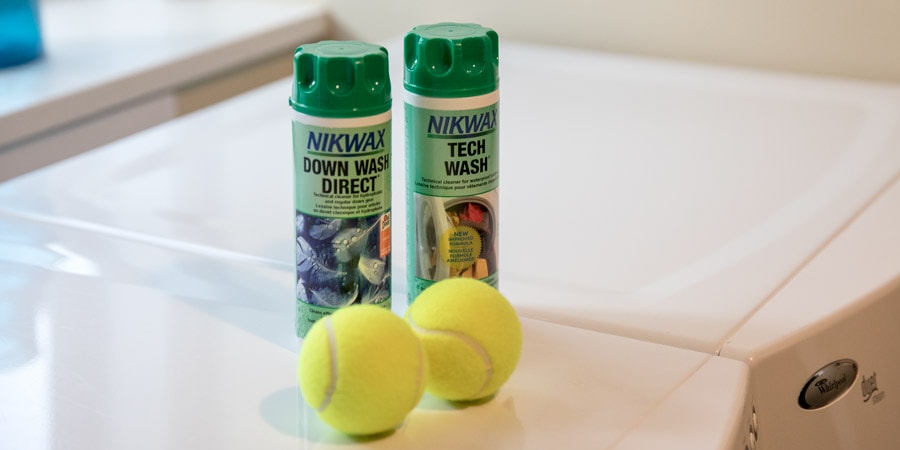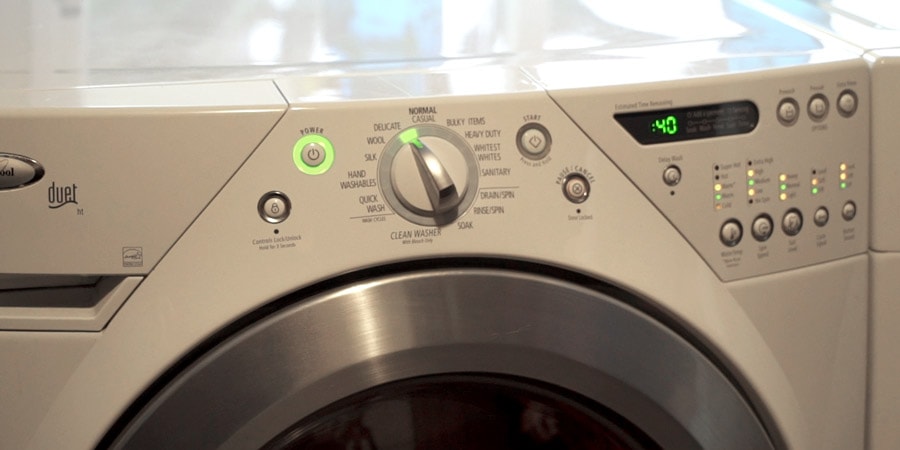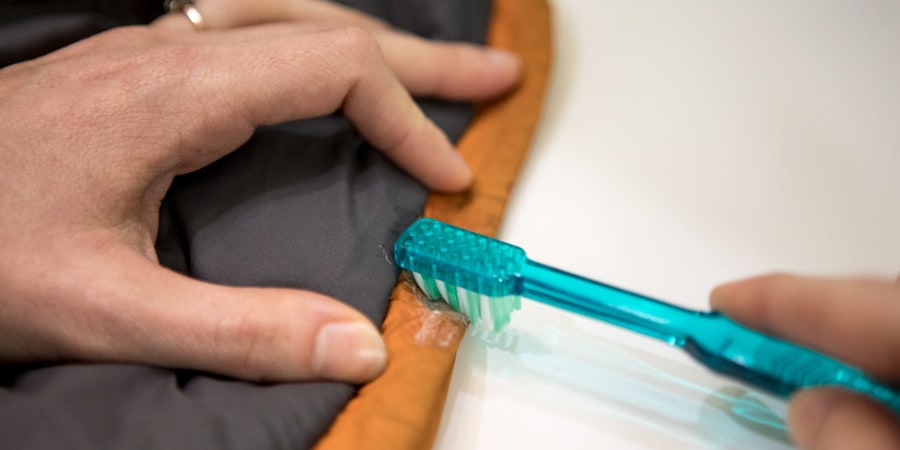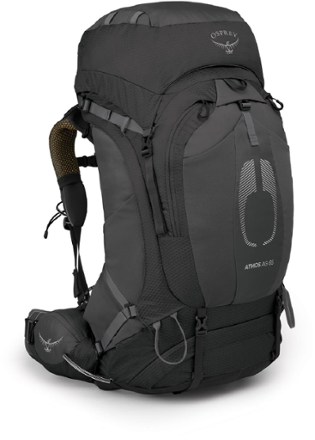If your sleeping bag is darkened with grime or worse yet—losing its fluffiness (loft)—then it's time to give it a good washing. The buildup of body oils and dirt over time will migrate into the fill (both down and synthetic) and begin to compromise your bag's loft and warmth.
You can hand wash it in a bathtub, which can be very labor-intensive, or send it to a professional service like Rainy Pass Repair. Or you can DIY that sleeping-bag cleaning job using a commercial-size washer and dryer at a laundromat.
How often should I wash my sleeping bag?
There's no need to wash your bag after every trip but it's a good idea to launder it once a year, at a minimum. If you're using your bag more frequently, you may want to wash it more often than annually. A good time to wash your bag is before you store it at the end of the season or for an extended period of time. Body oils and other greasy residues will stay on fabrics and fibers if the bag is packed away in storage without a good wash first.
General cleaning tips:
- Avoid dry cleaning: The industrial solvents used in dry cleaning are harsh and can strip the natural oils of down (the oils that help down retain its loft).
- Keep your bag cleaner in camp: You can make your sleeping bag last longer and stay cleaner if you also take care of it while at camp. Prevent dirt buildup by using a bag liner, sleeping in clean clothes and airing out your bag to dry it whenever it gets damp
Video: How to Clean a Sleeping Bag
How to Machine Wash a Sleeping Bag

How to Wash a Down Sleeping Bag
- Consult your bag maker's instructions (on a label or online).
- Use a front-loading commercial washer at a laundromat. The larger capacity ensures your bag is rinsed thoroughly. If you can't get to a laundromat, use a front-loading washer at home. However, avoid a top-loading washer with an agitator column because your bag could get damaged by becoming entangled or wrapped around it. It's also possible to hand wash a bag if no machines are available.
- For down bags, we recommend using a gear wash that's specifically formulated for down, like Nikwax Down Wash Direct, or one that specifically states it's safe for use on down items. Standard laundry detergent can lead to clumping or reduced loft.
- Unzip the bag completely to prevent the slider from snagging or breaking.
- Follow the bag maker's instructions, which typically say to wash the bag in warm water on a gentle cycle.
- Rinse at least twice to thoroughly remove any cleaning agent. Residue left behind may prevent the down fibers inside the bag from lofting. Remove as much moisture from the bag as possible; it should feel like dense clumps in a sack. If it feels spongelike, put it through another rinse cycle.
- Support the entire bag (not just one end) when removing it from the washer. This helps avoid straining and ripping the seams. Gently squeeze out excess water and proceed to the drying step.
How to Wash a Synthetic Sleeping Bag
- Consult your bag maker's instructions (on a label or online).
- Use a front-loading commercial washer at a laundromat. The larger capacities ensure your bag is rinsed thoroughly. If you can't get to a laundromat, use a front-loading washer at home. Avoid a top-loading washer with an agitator column because your bag could get damaged by becoming entangled or wrapped around it. It's also possible to hand wash a bag if no machines are available.
- Use a proper cleaner. For synthetic bags, we recommend a technical cleaner like Nikwax's Tech-Wash. Standard laundry detergent can lead to clumping or reduced loft or it can leave a film that acts as a hydrophobic agent.
- Unzip the bag completely to prevent the slider from snagging or breaking.
- Wash the bag in warm water on a gentle cycle. Or follow the bag maker's instructions.
- Rinse at least twice to thoroughly remove the cleaning agent. If the nylon bag is pooling water or feels spongy, put it through another rinse cycle. It should feel wet and damp, but not drenched.
- Support the entire bag (not just one end) when removing it from the washer. This helps avoid straining and ripping the seams.
- Gently squeeze out excess water and proceed to the drying step.
How to Dry Your Sleeping Bag

Synthetic sleeping bags will dry a lot quicker than down sleeping bags. Expect a synthetic bag to take at least an hour; a down bag will take several hours to dry thoroughly. Insulation loft is key to keeping warm. Both down and synthetic fills need to fluff up (loft) to create small air spaces within the insulation. These spaces trap body heat to help you stay warm while you sleep.
Here are some tips for drying a down or synthetic sleeping bag:
- Use a commercial-size dryer, if possible. Commercial dryers have larger capacities that allow fully lofted sleeping bags to tumble. If you don't have access to a laundromat, use a home dryer.
- Set the dryer on low heat. High heat can melt delicate nylon fabrics. It's better to dry on low heat for a longer time than blast it with high heat to speed up the drying process.
- For down sleeping bags, add two to three tennis balls to help agitate the fill back to the original loft. The balls help break up clumps of down to speed the drying process. For synthetic bags, tennis balls are helpful but optional.
- Run as many cycles as needed to completely dry the bag. Let it run for at least an hour but likely longer.
- Other drying methods: Though it will take longer, you can also air dry your bag by laying it flat on a clean surface in an area with low humidity and no direct sunlight. Or you can hang it up to dry; be careful to distribute the weight to not put too much stress on the nylon fabric.
- Extra drying: To be sure your bag is thoroughly dry before placing it in its storage bag, lay it out or hang it up overnight.
How to Hand Wash a Sleeping Bag

- Fill your bathtub with cool or warm water.
- Add the proper cleaning product for your down or synthetic bag; avoid using too much soap because it will be hard to rinse out.
- Lay the bag in the water and gently work in the soap throughout the entire bag.
- Rub together the most heavily soiled areas. Allow it to soak for up to one hour.
- Drain the tub and press out any remaining water.
- Fill the tub with cool or warm water to rinse and then work the soap out gently; let the bag sit for 15 minutes and drain.
- Press out any remaining water. Repeat the rinse process until all the soap is out.
- Gently squeeze out as much water as you can. Then, work your hands underneath and gather it all up in a ball in your arms to carry it to a dryer. (This helps avoid straining and ripping the seams.)
- If your home dryer is so small that the bag stays balled up after you place the bag inside of it, you'll need to transport your wet bag to the laundromat.
- Use low heat and expect a synthetic bag to take at least an hour; a down bag takes several hours—add two or three clean tennis balls if you have a down bag.
- If you choose not to use a dryer for your bag, lay it flat on a clean surface in an area with low humidity and no direct sunlight; you can also hang the bag up. You may need to manually break up clumps of insulation as your bag dries.
Spot Cleaning Your Bag

Because the interior lining at your bag's head and foot areas tends to get extra dirty, you should consider spot cleaning those areas prior to washing the entire bag. (And sometimes all your bag needs is a little TLC, not a full-blown bath.) The spot cleaning process is simple:
- Apply a small amount of mild soap (the same cleaner you'd use to wash the entire bag) to the spot you're cleaning.
- Use a soft-bristle toothbrush to gently clean the shell.
- Rinse using a wet sponge.
Tip: Hold the shell or liner fabric away from the insulation so that you can wash and rinse the outer shell without getting the inner fill wet. If the fill does get wet, then give it plenty of time to dry before storing your bag.




